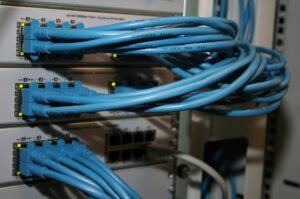Deep Learning Questions for Interview
Deep learning is a subfield of machine learning that focuses on artificial neural networks and algorithms inspired by the structure and function of the human brain. It has gained significant attention in recent years due to its remarkable performance in various domains. If you are preparing for a deep learning interview, it is essential to have a good understanding of the fundamental concepts and techniques. In this article, we will discuss some common deep learning questions that may come up during an interview, along with their answers.
Key Takeaways:
- Deep learning is a subset of machine learning that leverages artificial neural networks inspired by the human brain.
- Preparing for a deep learning interview involves understanding fundamental concepts and techniques.
- Questions in a deep learning interview can range from theoretical to practical applications.
- Being aware of the latest advancements and trends in deep learning can give you an edge.
Theoretical Concepts and Architecture
Deep learning interview questions often begin with theoretical concepts and architecture. Understand the following:
- The difference between shallow and deep neural networks.
- How the backpropagation algorithm works for adjusting the weights in a neural network.
- The purpose and benefits of activation functions like *ReLU* in deep learning models.
- The significance of regularization techniques, such as dropout and L1/L2 regularization.
*Deep neural networks are capable of learning complex patterns and representations.*
Convolutional Neural Networks (CNNs)
Convolutional Neural Networks (CNNs) are widely used for image recognition and computer vision tasks. Be familiar with the following concepts related to CNNs:
- The basic building blocks of CNNs, such as convolutional layers, pooling layers, and fully connected layers.
- The purpose of filters/kernels and how they are used in convolutional layers.
*CNNs utilize shared weights and local receptive fields, enabling them to capture spatial hierarchies and extract meaningful features from images.*
Recurrent Neural Networks (RNNs)
Recurrent Neural Networks (RNNs) are designed to process sequential data. Here are key points to grasp about RNNs:
- How RNNs handle sequential data and maintain information in memory.
- The vanishing gradient problem and how techniques like LSTM and GRU solve it.
- The applications of RNNs in natural language processing (NLP) and speech recognition.
*RNNs are adept at modeling sequential dependencies and are well-suited for tasks involving time-series data.*
Tables
| Deep Learning Frameworks | Year of Release |
|---|---|
| TensorFlow | 2015 |
| PyTorch | 2016 |
| Keras | 2015 |
| Common Activation Functions |
|---|
| ReLU |
| Sigmoid |
| Tanh |
| Deep Learning Applications |
|---|
| Image Classification |
| Natural Language Processing |
| Speech Recognition |
Practical Applications
Deep learning interview questions may also cover practical aspects. Familiarize yourself with the following concepts:
- Data preprocessing techniques, such as normalization and one-hot encoding.
- The importance of training, validation, and test splits in machine learning workflows.
- How to address overfitting and underfitting in deep learning models.
- Transfer learning and its applications in deep learning projects.
*Transfer learning allows deep learning models to leverage pre-trained networks for various tasks, saving significant resources and time.*
Latest Trends and Advancements
Being aware of the latest trends and advancements in deep learning can demonstrate your enthusiasm and engagement with the field. Stay informed about:
- State-of-the-art architectures, such as Transformer-based models for natural language processing and GANs for generative tasks.
- Progress in reinforcement learning, with focus on deep Q-learning and policy gradients.
- Hardware advancements, like TPUs and GPUs, that accelerate deep learning computations.
*Recent advancements in deep learning have significantly contributed to breakthroughs in natural language understanding, computer vision, and autonomous driving.*
By familiarizing yourself with these deep learning questions, you will be well-prepared for your interview and showcase your expertise in the field. Remember to keep learning and staying updated with the latest developments, as deep learning is a rapidly evolving field.

Common Misconceptions
There are several misconceptions that people often have when it comes to deep learning questions in interviews. Let’s debunk some of these misconceptions:
Deep Learning Questions are Only for Experts
One common misconception is that deep learning questions are only for experts in the field. While it is true that deep learning can be a complex subject, interview questions are often designed to test a candidate’s understanding of the basic concepts and their ability to problem-solve. You don’t need to have years of experience to be able to answer these questions correctly.
- Interview questions can start with basic concepts such as neural networks and their architecture.
- Applicants may be asked to explain common activation functions used in deep learning.
- A basic understanding of backpropagation and gradient descent is usually expected.
Deep Learning Questions are only about coding
Another misconception is that deep learning questions in interviews are focused solely on coding. While coding questions are certainly a part of the process, there is also a significant emphasis on understanding the theoretical concepts behind deep learning. Interviewers may ask questions about the mathematics behind neural networks, the limitations of certain architectures, or the intuition behind certain algorithms.
- Expect questions about the mathematics behind neural networks, including matrix operations and derivatives.
- Understanding the limitations of common deep learning architectures like convolutional neural networks (CNNs) and recurrent neural networks (RNNs) is crucial.
- Be prepared to explain the intuition behind algorithms like gradient descent and stochastic gradient descent.
Knowing the Basics is Enough
Some candidates mistakenly believe that knowing the basics of deep learning is sufficient to ace an interview. While a strong foundation in the basics is important, interviewers often expect candidates to have a deeper understanding and be familiar with recent advancements in the field. Keeping up with current research papers, attending conferences, and completing personal deep learning projects can help you stay updated.
- Be aware of recent advancements in the field, such as Generative Adversarial Networks (GANs) or Transformers.
- Stay up-to-date with popular deep learning frameworks such as TensorFlow or PyTorch.
- Having practical experience with real-life deep learning projects will boost your chances of success.
Deep Learning Questions are Formulaic
While there may be some common themes and patterns in deep learning interview questions, it is a misconception to believe that they are formulaic or predictable. Interviewers often strive to assess a candidate’s critical thinking and problem-solving skills. They may ask unconventional questions or present hypothetical scenarios to evaluate how a candidate approaches unfamiliar problems.
- Expect questions that require creative thinking and problem-solving skills.
- Be prepared to discuss your approach to handling unexpected or challenging situations in deep learning projects.
- Interviewers may ask you to explain how you would improve or optimize an existing deep learning algorithm or architecture.
Deep Learning Questions Always Have a Single Correct Answer
Contrary to popular belief, deep learning questions in interviews do not always have a single correct answer. Interviewers may be interested in how a candidate reasons through a problem and justifies their approach. It is important to demonstrate your thought process and be able to explain and defend your decisions.
- Be ready to explain your approach and thought process even if you’re unsure about the “correct” answer.
- Highlight your ability to adapt and learn from your mistakes or failures in previous deep learning projects.
- Interviewers may ask you about the trade-offs between different deep learning approaches or models.

Understanding Deep Learning
Deep learning is a branch of machine learning that focuses on artificial neural networks. These networks are designed to mimic the structure and functionality of the human brain, allowing them to learn and make predictions from vast amounts of data. As deep learning continues to revolutionize various industries, it is crucial for aspiring professionals to be well-versed in its principles and applications. In preparation for interviews, here are ten interesting and informative tables that highlight key concepts and questions related to deep learning.
1. Common Activation Functions
Activation functions are essential in artificial neural networks to introduce non-linearity and improve performance. The table below showcases some popular activation functions used in deep learning:
| Activation Function | Equation | Range |
|---|---|---|
| ReLU (Rectified Linear Unit) | f(x) = max(0, x) | [0, ∞) |
| Sigmoid | f(x) = 1 / (1 + e-x) | (0, 1) |
| Tanh (Hyperbolic Tangent) | f(x) = (ex – e-x) / (ex + e-x) | (-1, 1) |
2. Comparison of Deep Learning Frameworks
Multiple frameworks aid in implementing deep learning models efficiently. The following table presents a comparison among three popular frameworks: TensorFlow, PyTorch, and Keras.
| Framework | Advantages | Disadvantages |
|---|---|---|
| TensorFlow | Scalability, deployment options, community support | Steep learning curve for beginners |
| PyTorch | Dynamic computation graph, intuitive debugging | Relatively new, smaller community compared to TensorFlow |
| Keras | User-friendly, high-level API | Less flexible for complex models |
3. Convolutional Neural Network (CNN) Architectures
CNNs are particularly effective for image recognition tasks. This table highlights remarkable CNN architectures and their notable characteristics:
| Architecture | Key Features |
|---|---|
| LeNet-5 | Introduced by Yann LeCun, pioneer in deep learning |
| VGG-16 | Deep architecture with 16 layers, excellent performance |
| ResNet-50 | Utilizes skip connections to mitigate vanishing gradient problem |
4. Common Loss Functions
Loss functions quantify how well a model performs and guide the learning process. The following table presents widely used loss functions for deep learning:
| Loss Function | Equation | Application |
|---|---|---|
| Mean Squared Error (MSE) | L = (1 / n) ∑(yi – ȳi)2 | Regression problems |
| Binary Cross-Entropy | L = -∑(yi * log(pi) + (1 – yi) * log(1 – pi)) | Binary classification |
| Categorical Cross-Entropy | L = -∑(yi * log(pi)) | Multiclass classification |
5. Recurrent Neural Network (RNN) Cells
RNNs are suitable for sequence data analysis due to their sequential memory. The table below showcases some essential RNN cell types:
| RNN Cell Type | Features |
|---|---|
| Simple RNN | Basic RNN cell with a simple architecture |
| LSTM (Long Short-Term Memory) | Enhanced cell with memory and forget gates |
| GRU (Gated Recurrent Unit) | Similar to LSTM but with fewer gates |
6. Object Detection Algorithms
Object detection algorithms identify and locate objects within images or videos. The following table presents popular algorithms:
| Algorithm | Notable Features |
|---|---|
| YOLO (You Only Look Once) | Real-time detection, high accuracy |
| SSD (Single Shot MultiBox Detector) | Efficiency, good performance with SSD300 and SSD512 |
| R-CNN (Region Convolutional Neural Network) | Introduced region proposals and selective search |
7. Generative Adversarial Networks (GANs)
GANs consist of two neural networks, a generator and a discriminator, that compete against each other to generate realistic data. This table describes popular GAN architectures:
| Architecture | Advantages |
|---|---|
| DCGAN (Deep Convolutional GAN) | High-quality image generation, stability |
| CGAN (Conditional GAN) | Controlled generation based on conditioning variable |
| WGAN (Wasserstein GAN) | Improved training stability with Wasserstein loss |
8. Natural Language Processing (NLP) Architectures
NLP architectures play a vital role in tasks like sentiment analysis, machine translation, and text generation. The table below presents notable NLP architectures:
| Architecture | Key Features |
|---|---|
| Transformer | Introduced self-attention mechanism, state-of-the-art performance |
| LSTM-CNN | Combination of LSTM and CNN for effective sequence modeling |
| BERT (Bidirectional Encoder Representations from Transformers) | Pretrained model, contextualized word embeddings |
9. Bias-Variance Tradeoff
The bias-variance tradeoff is a fundamental concept in machine learning. This table illustrates scenarios with high and low bias-variance:
| Scenario | Bias | Variance |
|---|---|---|
| Overfitting | Low | High |
| Underfitting | High | Low |
| Optimal Model | Low | Low |
10. Unsupervised Learning Algorithms
Unsupervised learning algorithms explore and identify patterns in data without labeled examples. The following table highlights well-known algorithms:
| Algorithm | Applications |
|---|---|
| k-means Clustering | Data clustering, image compression |
| Principal Component Analysis (PCA) | Dimensionality reduction, data visualization |
| Generative Adversarial Networks (GANs) | Data generation, unsupervised representation learning |
By familiarizing yourself with the concepts presented in these tables, you will acquire a solid understanding of key aspects of deep learning. Remember to study further and gain hands-on experience to excel in interviews and contribute to the exciting field of artificial intelligence.
Deep learning poses numerous questions and challenges, but also provides immense opportunities for innovation and progress. As the demand for professionals skilled in deep learning continues to rise, mastering the concepts and techniques discussed in this article will undoubtedly pave your path to success in the field. Stay curious, motivated, and keep exploring the fascinating realm of deep learning!
Frequently Asked Questions
What is deep learning?
What is deep learning?
How does deep learning work?
How does deep learning work?
What are the applications of deep learning?
What are the applications of deep learning?
What are the advantages of deep learning?
What are the advantages of deep learning?
What are the challenges of deep learning?
What are the challenges of deep learning?
What is the difference between deep learning and machine learning?
What is the difference between deep learning and machine learning?
What are the types of neural networks used in deep learning?
What are the types of neural networks used in deep learning?
What are some popular deep learning frameworks and libraries?
What are some popular deep learning frameworks and libraries?
How can I start learning deep learning?
How can I start learning deep learning?




